
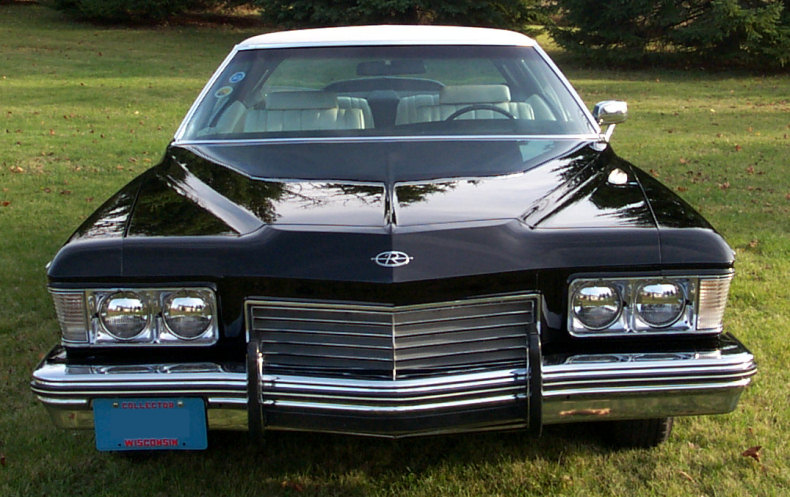
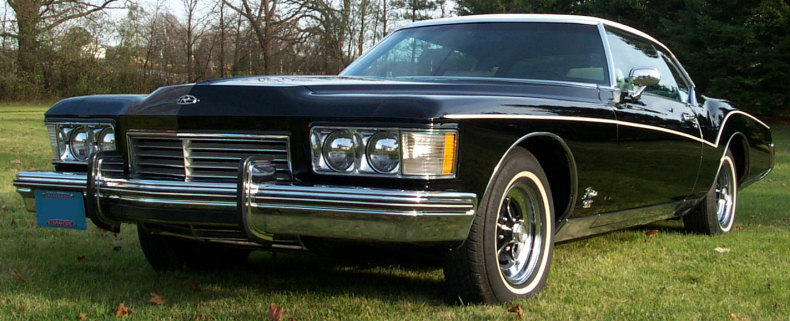

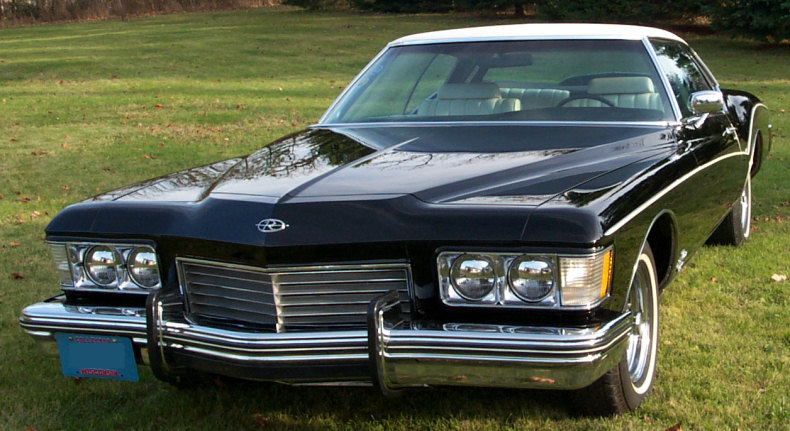

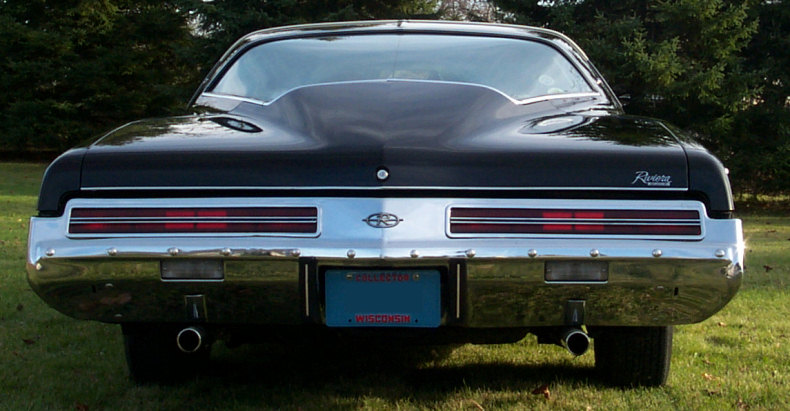
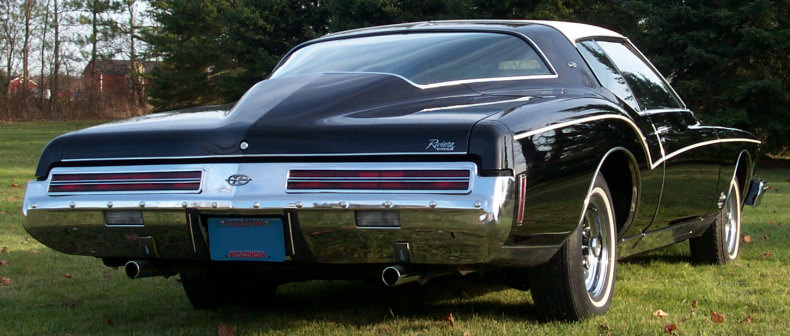


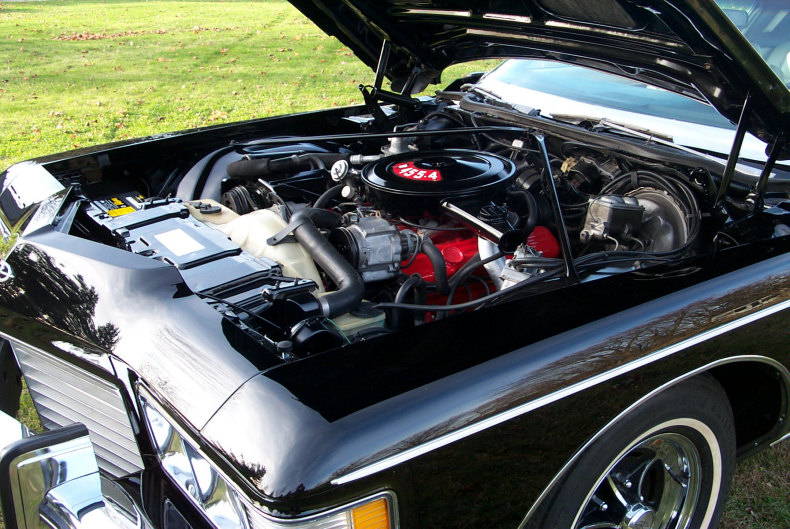
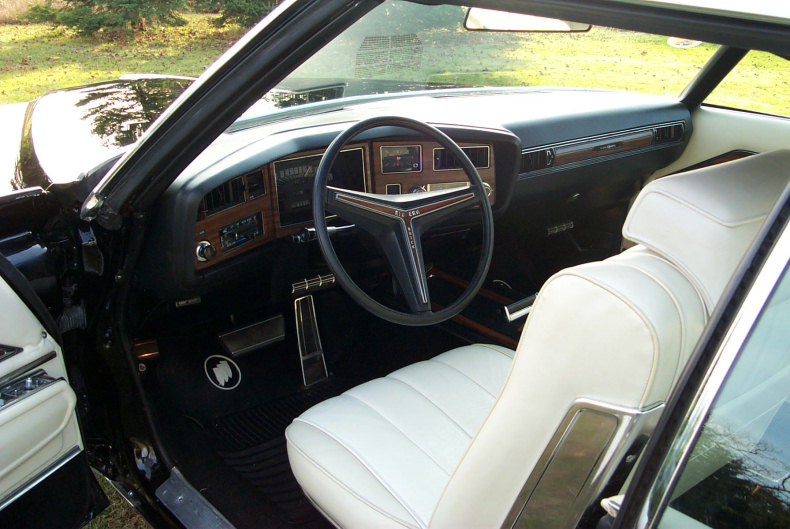
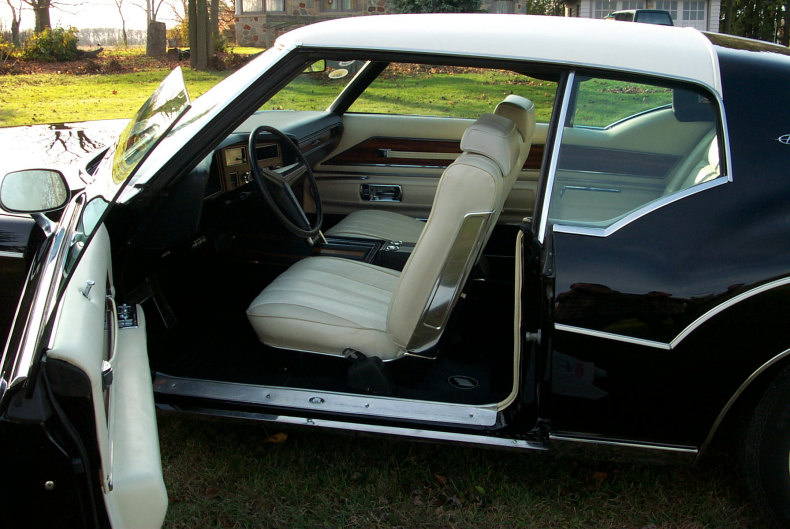
Buick Riviera Third generation (1971-1973)
The Riviera was radically redesigned for the 1971 model year with flowing and dramatic "boat-tail" styling. Designed under Bill Mitchell's direction, it was penned by Jerry Hirschberg, future head of design for Nissan, mating the two-piece vee-butted fastback rear window, inspired by the 1963 Corvette Sting Ray split window coupe, to the Riviera's platform. The design was originally intended for the smaller GM A platform, and the use of the Riviera's body—expanded for 1971 by 3 in (76 mm) in wheelbase and more than 120 lb (54 kg) heavier—produced controversial looks. (Collectible Automobile ran an article about 1971-76 full-sized Buicks where one sketch design for their 2-door coupes which was rejected resembled the 1971-73 Riviera.) The 455 engine had a lower compression ratio to meet EPA emissions requirements, reducing power to 255 hp (190 kW), with 265 hp (198 kW) in the Gran Sport. Performance remained reasonably brisk, but the Riviera's sporty image was rapidly fading. One noteworthy advance was Buick's Max Trac, a traction control system that prevented wheel spin during acceleration on slippery surfaces. The 1971 Riviera also features GM's "Full-Flo" ventilation system and two large deck lid louvers are prominent on the trunk lid. (Unfortunately, under certain conditions a vacuum was created that sucked rain and exhaust back into the car and the "Full-Flo" ventilation was redesigned and the louvers were removed from trunk lid for the 1972 model year.)
Despite these features, Riviera sales for 1971 dropped to 33,810, the lowest to date. The 1972 Riviera was little changed, with the 455 engine switching to net power ratings, 225 hp (168 kW) or 250 hp (190 kW) with the Gran Sport, although the actual drop in net power was only 5 hp (3.7 kW). Sales remained moribund at 33,728. For 1973, the 250 hp (186 kW) engine became standard, with 260 hp (190 kW) with the Stage One package, which also included a limited slip differential and a chrome-plated air cleaner. The "Gran Sport" package was still available as a separate option package consisting of a ride-and-handling package that included a rear stabilizer bar, JR78-15 whitewall steel-belted radial tires, a specially tuned "radial roadability" suspension, additional sound insulation and special "Gran Sport" badging. The 1973 model is also distinguished from the 1972 models in that the rear "boat-tail" is somewhat less pronounced than on the 1972 model, resulting in a flatter rear bumper